Khadas VIM2 board is the successor of Khadas VIM board, replacing Amlogic S905X by a slightly more powerful Amlogic S912, but that’s the connectivity features that really makes it stand apart from the first version with Gigabit Ethernet, 802.11ac WiFi and Bluetooth 4.2. It also exposes a few extra I/Os via pogopins. and among the three variants, two comes with 3GB RAM, and up to 64 GB storage.
The company (Shenzhen Wesion) sent me one of the boards, together with various accessories, and I’ll start the review of the board by checking out the hardware and accessories, before testing the board further in another post.
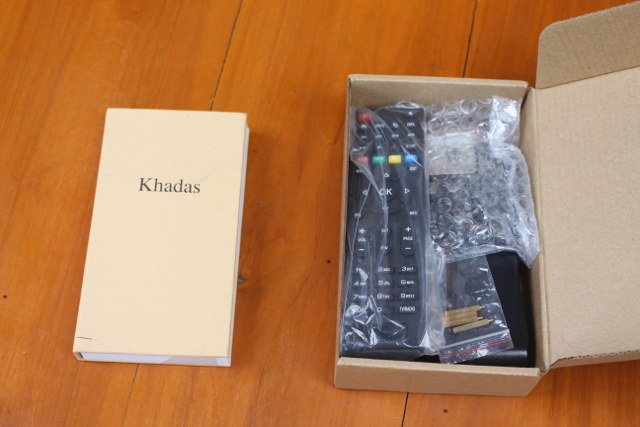
I received two packages: one book-like with Khadas marked on top, and another one with various other items.
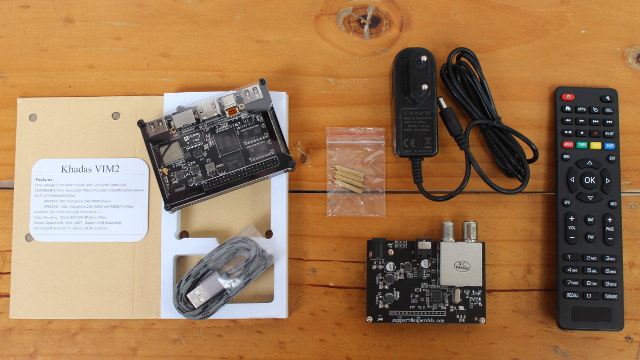
The first package includes the board, a USB to USB type C cable, and a card showing the main specifications, and supported operating systems: Ubuntu 16.04, Android 7.1. Buildroot build system is also another option to generate a minimal or custom image.
The second package comes with an IR remote control, a 12V/1.5A power supply, four stands, and VTV 2.2 tuner board.
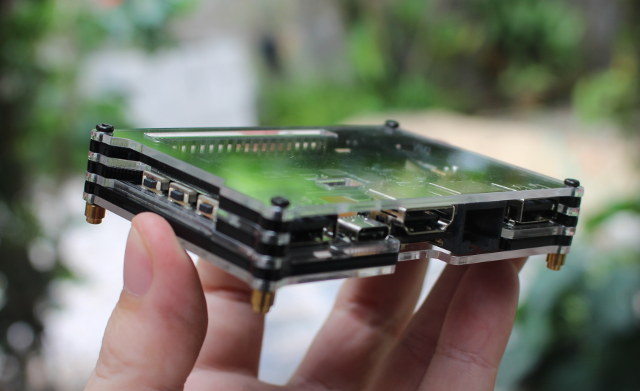
The board comes in a multi-layered acrylic case and exposes the same buttons and ports as its predecessor with 3 buttons (reset, function, power), USB type C port for power, HDMI output, Ethernet, and two USB 2.0 ports.
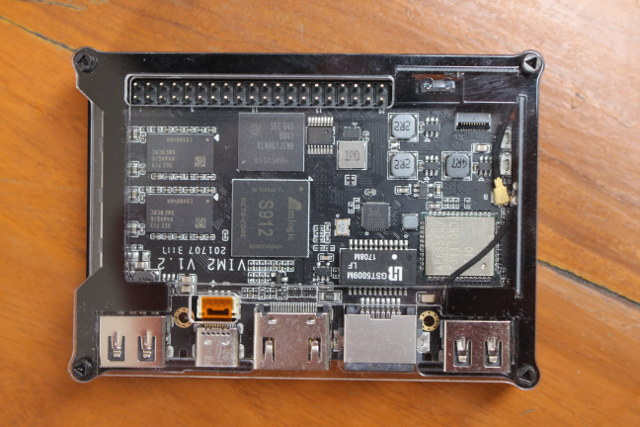
The case has openings for the 40-pin header and VIN header behind the USB type C board. We can see Ampak AP6356S module is used meaning I’ve been sent Khadas VIM2 Basic version with 2GB DDR4 RAM and 16GB eMMC 5.1 flash.
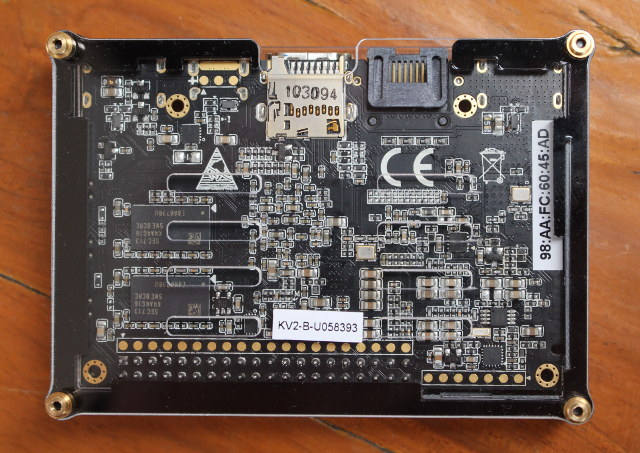
The bottom of the board has the remaining RAM chips, the micro SD card, and some ventilation holes. You’ll also notice some 20-pin and 7-pin pads, with the first one exposing USB, I2C, DVB bus, and I/Os, and the second for the small programmable MCU on the bottom right.
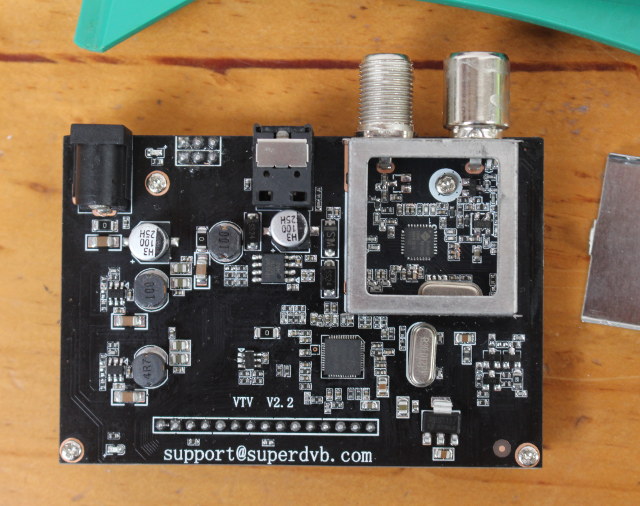
Looking at DTV board we can see two antenna inputs with F connector and coaxial connector, Rafael Micro R848 universal tuner supporting DVB-T/T2/C, ISDB-T/C, DTMB, ATSC,J.83B, and DVB-S/S2, ABS-S, as well as Availink AVL6862TA demodulator. That’s the same chips combination as in KI Plus T2 S2 TV box supporting satellite dish and aerial antenna inputs.
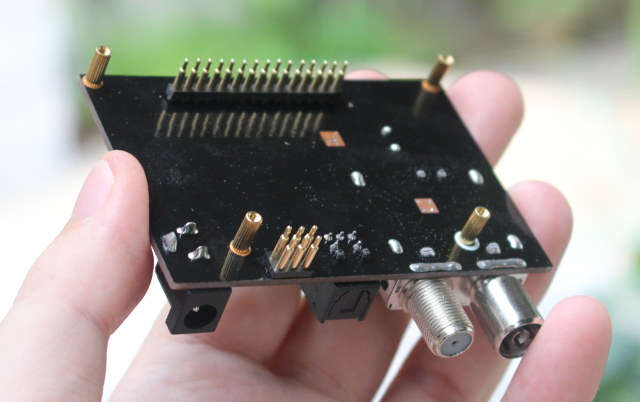
The bottom side of the board has one pogo pin rows to connect to the 20-pin row on the board, and 6 other pogo pins for power. In order to connect the VTV board to Khadas VIM2, we’ll have to disassemble the case, and align the VTV board with the pogo pings and mounting holes on Khadas VIM2.
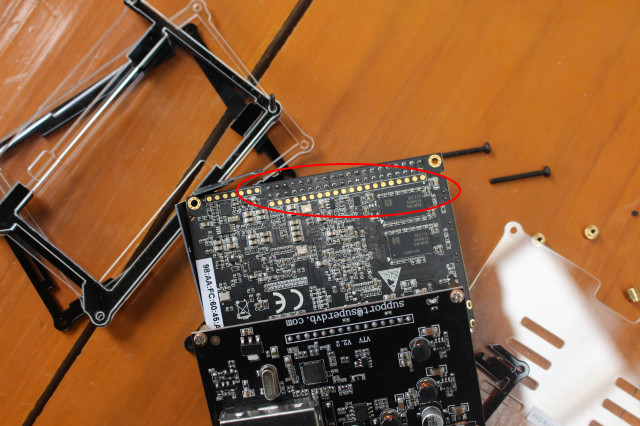
We can now screw the four stands on the top of VIM2 board to secure both boards together.
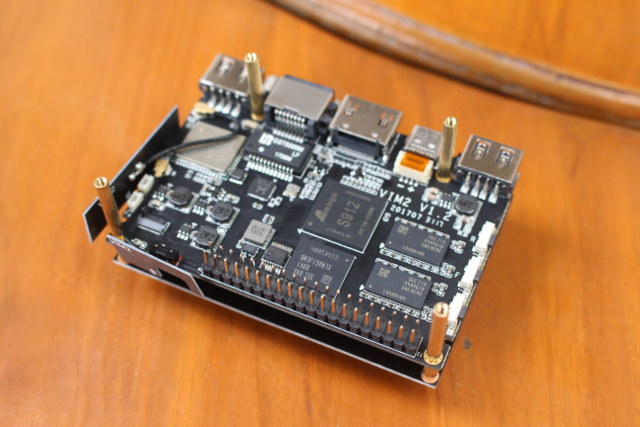
We now have an interesting development platform with dual tuner support.
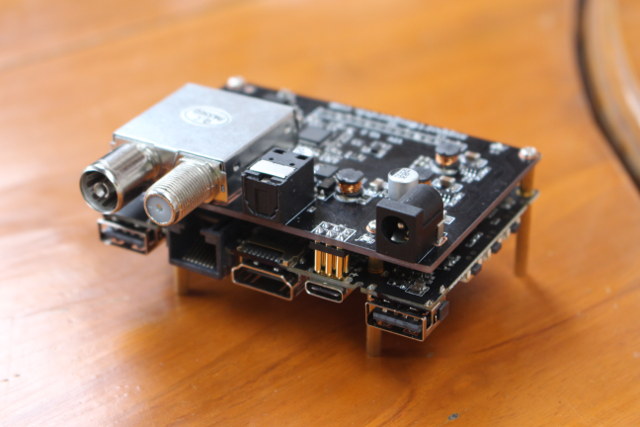
I’d like to thank Shenzhen Wesion for sending the kit for review. Khadas VIM2 Basic board can be purchased for $72.99 shipped on GearBest, and the VTV extension DTV board with power supply, remote control, and stands costs $39.99 extra. For the second part of the review, I’m considering using the board as DVB video server taking live TV input from my antenna / satellite dish, and broadcasting the video over my local network. That’s provided it can be done within one or two days.
[Update: I’ve posted the second part of the review: How to Use Khadas VIM2 Board with VTV Expansion DTV Board as a Live TV Streaming Server]

Jean-Luc started CNX Software in 2010 as a part-time endeavor, before quitting his job as a software engineering manager, and starting to write daily news, and reviews full time later in 2011.
Support CNX Software! Donate via cryptocurrencies, become a Patron on Patreon, or purchase goods on Amazon or Aliexpress




